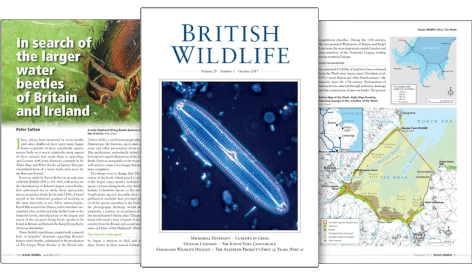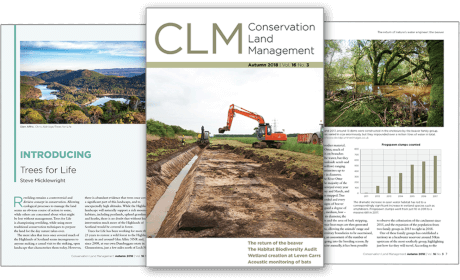Art / Photobook
By: Pierre-Joseph Redouté(Illustrator), Marc Médevielle(Contributor), Catherine de Bourgoing(Contributor), Anne-Marie Slézec(Contributor), Jean-Michel Boursiquot(Contributor), Nathalie Ollat(Contributor), Cornelis van Leeuwen(Contributor), Olivier Yobrégat(Contributor), Sébastian Julliard(Contributor), Louis Bordenave(Contributor), Thierry Lacombe(Contributor), Jean-Robert Pitte(Foreword By), Constant Lecœur(Preface By)
256 pages, colour photos, colour & b/w illustrations
This art book reproduces a rediscovered collection of 19th-century paintings, made by famed artist Pierre-Joseph Redouté, that formed France's first overview of the nation's grape varieties.
![Les Raisins de Redouté: Des Aquarelles pour l'Avenir de la Vigne [Redouté's Grapes: Watercolours for the Future of the Vine] Les Raisins de Redouté: Des Aquarelles pour l'Avenir de la Vigne [Redouté's Grapes: Watercolours for the Future of the Vine]]()
Click to have a closer look
About this book
Customer reviews
Related titles
About this book
Language: French
The story behind this book is remarkable. In the 1800s, the wine trade in France was largely unregulated, with some 90% of French wines hardly fit to drink. Stiff competition from Italy and Spain, themselves major wine producers, led to the First Consul appointing Jean-Antoine Chaptal, Minister of the Interior, to make an inventory of the nation's grapevine resources. Chaptal asked prefects around the country to send him cuttings of their local grapevine varieties and commissioned several botanical painters, including the famed Pierre-Joseph Redouté, to produce a series a paintings to help with identification and nursery efforts. This resulted in the first work of ampelography (the branch of botany concerned with the identification and classification of grapevines), which contained 83 paintings on vellum, a type of paper made with stillborn calf skin. It marked a highly symbolic event in the history of French viticulture.
The paintings produced for this work subsequently went missing until a journalist in 2017 contacted the French Academy of Agriculture, looking for a particular painting. The institute's archivist, unsure that these paintings were still in existence, promised to check and, after scouring the archives, found an old folder containing 83 vellums. Experts from the Natural History Museum were invited to determine their authenticity and, to their surprise, concluded these were the originals. To preserve this cultural heritage, the academy approached Editions Paulsen to reproduce these paintings. Brought together for the first time in a book, they are accompanied by an explanatory text by one of the greatest French ampelographers: Jean-Michel Boursiquot. At a time of renewed interest in indigenous grape varieties and the many questions raised by global warming, they bear witness to the past diversity in a country where 95% of wine production today relies on forty varieties.
Summary in French:
Ces peintures sur vélin datant du début du XIXe siècle ont une valeur patrimoniale incomparable. Elles ont été réalisées par les plus fameux illustrateurs botaniques de l’époque, au premier rang desquels Pierre-Joseph Redouté, et marquent une date hautement symbolique dans l’histoire de la viticulture française : les prémices de l’ampélographie. Réunies pour la première fois dans un ouvrage, elles sont accompagnées d’un texte explicatif de l’un des plus grands ampélographes français : Jean-Michel Boursiquot. À l’heure du regain d’intérêt pour les cépages autochtones et des nombreuses interrogations induites par le réchauffement climatique, elles témoignent de la diversité passée dans un pays où 95 % de la production vinicole repose aujourd’hui sur quarante variétés.
Customer Reviews
Art / Photobook
By: Pierre-Joseph Redouté(Illustrator), Marc Médevielle(Contributor), Catherine de Bourgoing(Contributor), Anne-Marie Slézec(Contributor), Jean-Michel Boursiquot(Contributor), Nathalie Ollat(Contributor), Cornelis van Leeuwen(Contributor), Olivier Yobrégat(Contributor), Sébastian Julliard(Contributor), Louis Bordenave(Contributor), Thierry Lacombe(Contributor), Jean-Robert Pitte(Foreword By), Constant Lecœur(Preface By)
256 pages, colour photos, colour & b/w illustrations
This art book reproduces a rediscovered collection of 19th-century paintings, made by famed artist Pierre-Joseph Redouté, that formed France's first overview of the nation's grape varieties.
Reviews of the second edition:
"Study and Communication Skills for the Biosciences is an excellent text. It contains all the advice that I have been giving students for years, all clearly explained, with appropriate examples. The authors clearly know what they are talking about."
– Lorraine Weaver, University of Worcester
"This textbook fills a niche and is an invaluable resource for students and lecturers alike."
– Dr Gemma Marsden, University of Northampton
"An excellent text covering the key areas in study skills and communication [...] it is nice to see information on topics such as making the most of lectures and using feedback as these are not widely covered in other texts."
– Dr Sara Marsham, Newcastle University





![Les Raisins de Redouté: Des Aquarelles pour l'Avenir de la Vigne [Redouté's Grapes: Watercolours for the Future of the Vine] Les Raisins de Redouté: Des Aquarelles pour l'Avenir de la Vigne [Redouté's Grapes: Watercolours for the Future of the Vine]](http://mediacdn.nhbs.com/jackets/jackets_resizer_xlarge/26/268024.jpg?height=620)
![Les Raisins de Redouté: Des Aquarelles pour l'Avenir de la Vigne [Redouté's Grapes: Watercolours for the Future of the Vine]](http://mediacdn.nhbs.com/jackets/jackets_resizer/26/268024.jpg)
![Les Raisins de Redouté: Des Aquarelles pour l'Avenir de la Vigne [Redouté's Grapes: Watercolours for the Future of the Vine]](http://mediacdn.nhbs.com/jackets/jackets_resizer/26/268024_01.jpg)
![Les Raisins de Redouté: Des Aquarelles pour l'Avenir de la Vigne [Redouté's Grapes: Watercolours for the Future of the Vine]](http://mediacdn.nhbs.com/jackets/jackets_resizer/26/268024_02.jpg)
![Les Raisins de Redouté: Des Aquarelles pour l'Avenir de la Vigne [Redouté's Grapes: Watercolours for the Future of the Vine]](http://mediacdn.nhbs.com/jackets/jackets_resizer/26/268024_03.jpg)
![Les Raisins de Redouté: Des Aquarelles pour l'Avenir de la Vigne [Redouté's Grapes: Watercolours for the Future of the Vine]](http://mediacdn.nhbs.com/jackets/jackets_resizer/26/268024_04.jpg)
![Les Raisins de Redouté: Des Aquarelles pour l'Avenir de la Vigne [Redouté's Grapes: Watercolours for the Future of the Vine]](http://mediacdn.nhbs.com/jackets/jackets_resizer/26/268024_05.jpg)
![Les Raisins de Redouté: Des Aquarelles pour l'Avenir de la Vigne [Redouté's Grapes: Watercolours for the Future of the Vine]](http://mediacdn.nhbs.com/jackets/jackets_resizer/26/268024_06.jpg)
![Les Raisins de Redouté: Des Aquarelles pour l'Avenir de la Vigne [Redouté's Grapes: Watercolours for the Future of the Vine]](http://mediacdn.nhbs.com/jackets/jackets_resizer/26/268024_07.jpg)
![Les Raisins de Redouté: Des Aquarelles pour l'Avenir de la Vigne [Redouté's Grapes: Watercolours for the Future of the Vine]](http://mediacdn.nhbs.com/jackets/jackets_resizer/26/268024_08.jpg)
![Les Raisins de Redouté: Des Aquarelles pour l'Avenir de la Vigne [Redouté's Grapes: Watercolours for the Future of the Vine]](http://mediacdn.nhbs.com/jackets/jackets_resizer/26/268024_09.jpg)
![Les Raisins de Redouté: Des Aquarelles pour l'Avenir de la Vigne [Redouté's Grapes: Watercolours for the Future of the Vine]](http://mediacdn.nhbs.com/jackets/jackets_resizer/26/268024_10.jpg)















